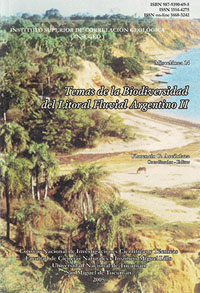Miscelánea 14
Diversidad y conservación de anuros en ecosistemas agrícolas de Argentina: implicancias en el control biológico de plagas
Paola M. Peltzer | Rafael C. Lajmanovich | Andrés M. Attademo | Walter Cejas
Para adquirir la publicación haga click aquí
Abstract
DIVERSITY AND CONSERVATION OF ANURAN IN AGRICULTURAL ECOSYSTEMS OF ARGENTINA: IMPLICATION IN THE BIOLOGICAL CONTROL OF PLAGUES.- The conversion of forest to agricultural land is occurring at rapid rates in many Neotropical areas. These land-cover trends have spurred research to investigate the role that agroecosystems play in providing habitat for Neotropical organisms and in the conservation of biodiversity. In the center-east of Argentina, traditional agriculture was replaced by a more specialized agriculture aimed at large scale production with glyphosate-tolerant (GT)-soybean (Glycine max L.) as the dominant crop. This new agriculture has led to the expansion of cultivated areas, thus exerting an increasing pressure on uncultivated portions of the land and wildlife survival. We examined the anuran amphibian diversity of 31 ponds (30 located on the border of soybean cropland and 1 within a protected forest) in mid-western Entre Ríos Province (Argentina). Moreover, we examined the diet composition of anuran in soybean of the Córdoba and Entre Ríos Provinces of Argentina, investigating their potential as biological control agents of herbivores species. The ponds surrounded by soybean croplands varied in their capacity to support anuran species. Management of anurans on agroecosystems will require defining high-quality habitat for individual species or group of species, followed by efforts to retain or restore these aquatic habitat. The maintenance of shore vegetation of ponds and hedgerows may increase the number of species and diversity of anurans within agricultural landscapes. Thus, the variety of arthropods they consumed suggests that anuran populations could be important biological control factors of soybean arthropods. Finally, a more diversified system of cultivations could contain certain resources for the natural enemies, provided by the diversity of plants in the field borders and environmental heterogeneity.




